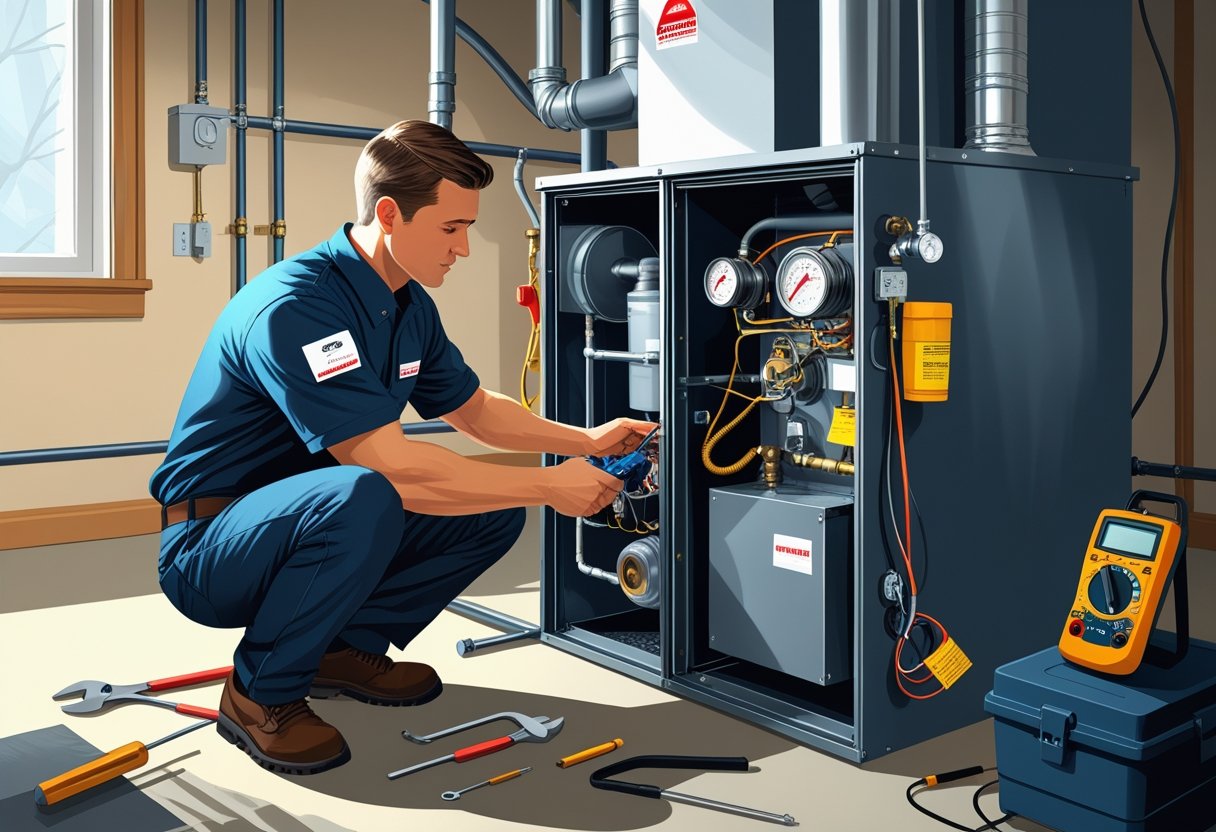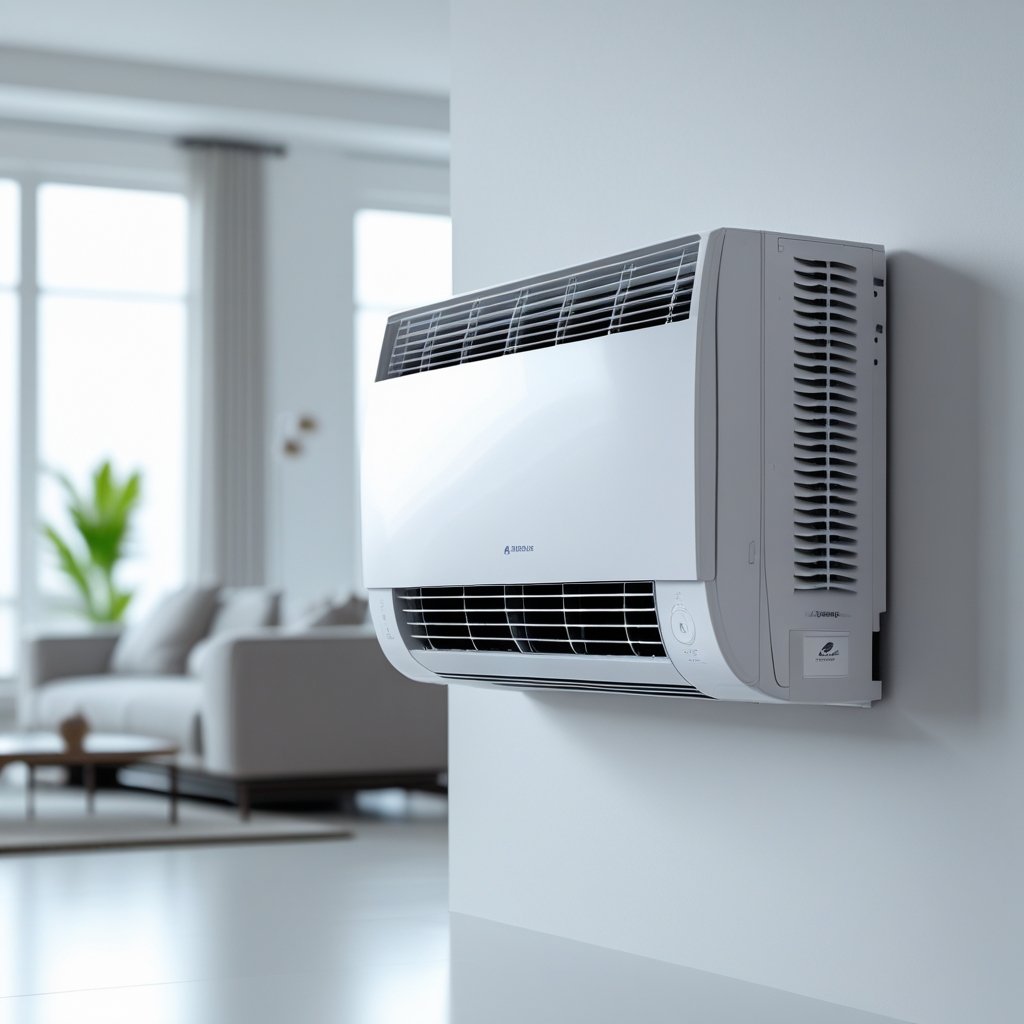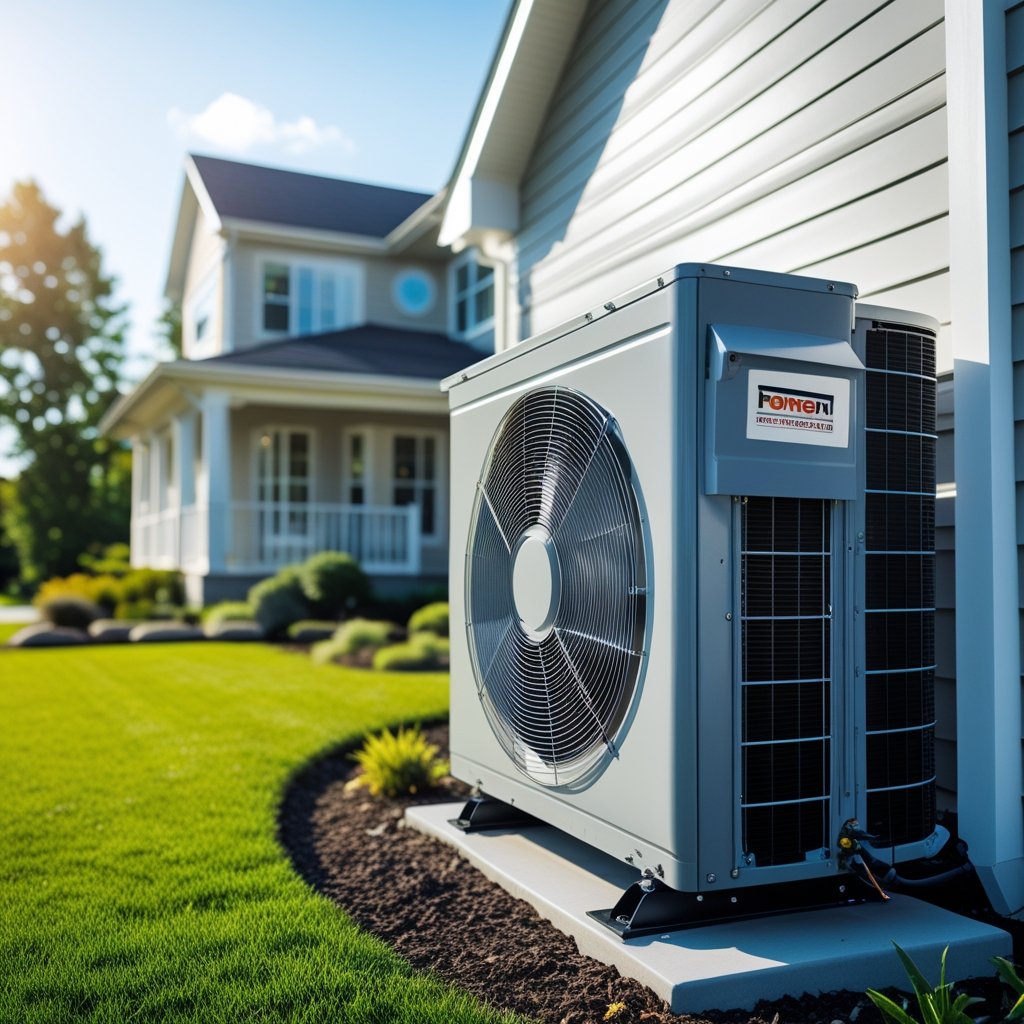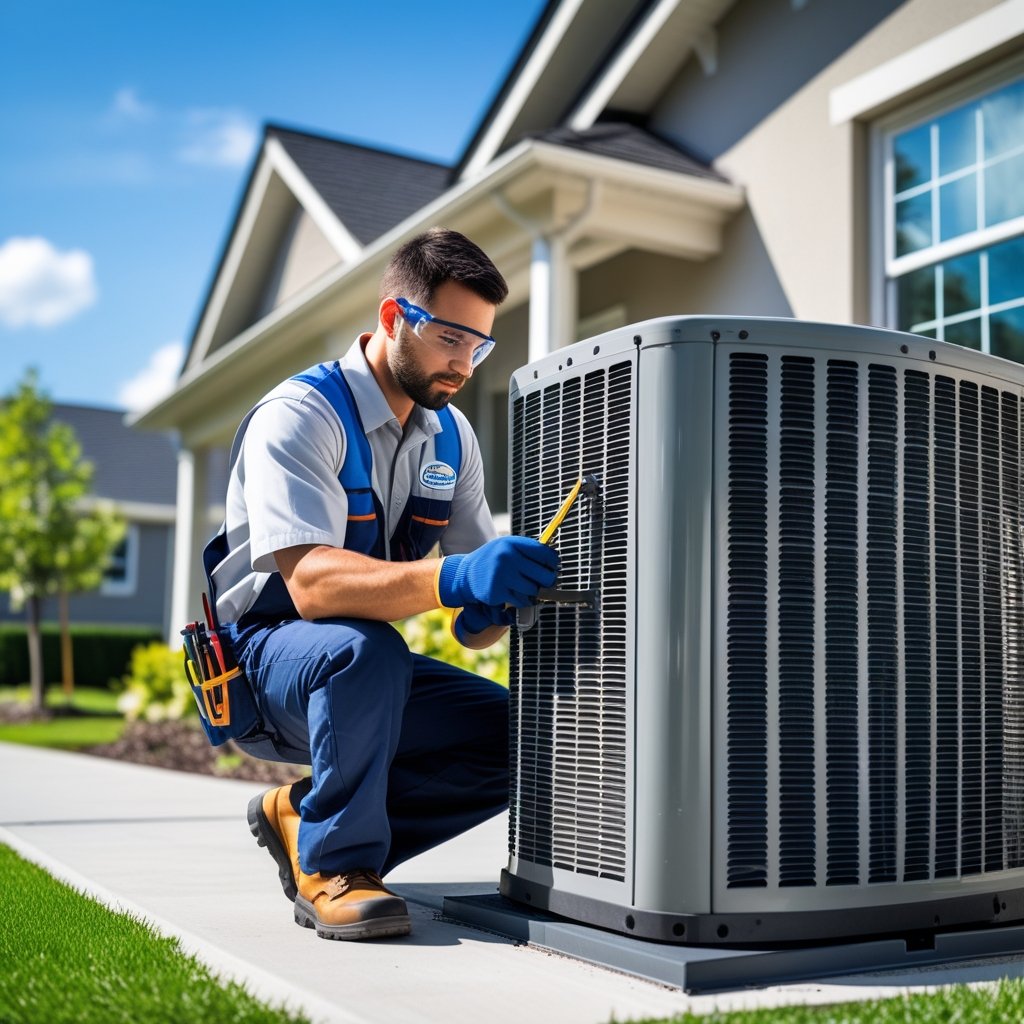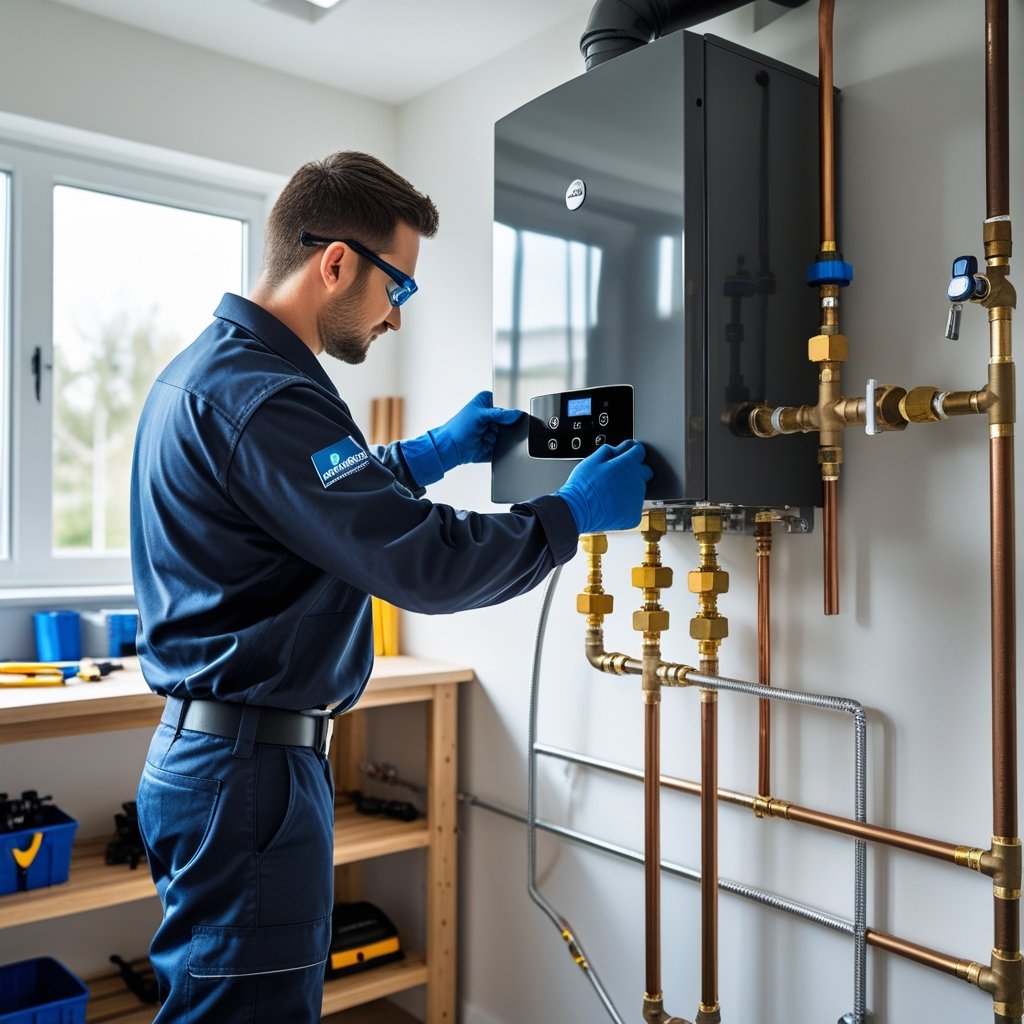When your oil furnace breaks down, your home can quickly get cold and uncomfortable. Oil furnace repair gets your heat back fast and keeps your system running safely and efficiently through winter. Knowing when to call in a pro can save you from bigger headaches and expensive fixes down the road.
At Leo Kob Co., we get how much you rely on a solid heating system—especially in South Central Pennsylvania. Our licensed techs focus on honest, skilled repairs to keep your furnace working, without pushing you into buying a new one if you don’t need it. When you stay on top of oil furnace maintenance and repairs, you can count on warmth and (hopefully) lower energy bills all winter.
Understanding Oil Furnace Systems
Oil furnaces use fuel oil to heat your home by burning it and sending out warm air. These systems have a bunch of parts working together to create and spread heat. If you know the basics, you can spot problems early and keep things running smoother.
How Oil Furnaces Work
Your oil furnace burns heating oil to make heat. Oil sprays into a combustion chamber and ignites, creating heat that warms a metal heat exchanger.
A blower fan pushes air over the heat exchanger, and that warmed air flows through your ducts into your rooms. Combustion gases exit through a vent or chimney.
The thermostat signals when you need heat, so the furnace cycles on and off to keep your place at the right temp.
Types of Oil Furnaces
There are two main types of oil furnaces: standard and high-efficiency. Standard models usually hit around 80% efficiency, meaning some heat escapes in the exhaust.
High-efficiency furnaces squeeze out more heat, sometimes hitting 90% or more, thanks to an extra heat exchanger that grabs more warmth from the gases before they vent out.
You’ll run into gravity furnaces that move air naturally or, more often these days, forced-air models that use fans. Forced-air is more popular now since it heats spaces faster and more evenly.
Common Components
Here are the main parts that keep your oil furnace going:
- Burner: Mixes oil and air, then ignites the fuel.
- Heat Exchanger: Transfers heat from combustion to the air.
- Blower Motor: Pushes the warm air through your house.
- Thermostat: Tells the furnace when to kick on.
- Fuel Tank and Lines: Store and deliver oil to the burner.
- Flue or Vent Pipe: Gets exhaust gases safely outside.
Keeping these parts in good shape with regular service is key for safety and efficiency. Leo Kob Co. offers professional checks and repairs so your furnace stays reliable through the cold.
Signs Your Oil Furnace Needs Repair
When your oil furnace isn’t working right, it can mess with your comfort and drive up your bills. Some problems are obvious—like weird noises or weak heat—but others are sneakier. If you know what to watch for, you can catch issues early and dodge bigger repairs.
Unusual Noises
If your oil furnace starts rattling, popping, or screeching, something’s off. These noises can mean loose parts, dirty burners, or blower motor trouble.
Rattling often points to loose screws or panels. Popping usually means oil isn’t burning right. Screeching? That’s probably worn bearings or belts.
Don’t just hope these sounds go away. When you hear them, get a pro like Leo Kob Co. to take a look.
Insufficient Heating
You want your furnace to heat your whole house, but if some rooms stay cold or the system runs forever and still feels chilly, it’s time for repairs. Clogged oil filters, dirty burners, or a bad thermostat can all cause this.
Look for these clues:
- Uneven room temperatures
- Furnace runs nonstop but doesn’t warm up
- Your energy bill jumps for no reason
Fixing these problems can boost both comfort and efficiency. Regular maintenance helps keep weak heating at bay.
Frequent Cycling
If your oil furnace keeps turning on and off, that’s called frequent cycling. It wastes energy and wears out the system faster. This can happen if the flame sensor is dirty, air filters are blocked, or the thermostat isn’t working right.
Frequent cycling burns extra fuel and could mean your furnace is the wrong size for your house—or there’s a safety issue.
Watch how often your furnace cycles each hour. If it’s more than a handful, it’s not running smoothly and needs a pro’s attention.
Visible Leaks or Odors
Spotting oil leaks or smelling strong fuel odors is serious. Leaks can be a fire hazard or damage your home. Fuel smells might mean a leak or bad combustion.
Don’t ignore these signs. If you see oil puddles or smell burning oil, shut off your furnace and call an experienced tech.
Leo Kob Co. serves South Central Pennsylvania with careful inspections to catch leaks early and keep your system safe.
Troubleshooting Common Oil Furnace Problems
When your oil furnace acts up, it’s frustrating—and chilly. Most issues come from the ignition system, blower motor, or thermostat. If you know what to look for, you can explain the problem better when you call for help.
Ignition Failures
If your furnace won’t start, the ignition system might be at fault. Most oil furnaces use a hot surface igniter or a spark igniter to light the burner.
Listen for a clicking sound—that means the ignition is trying. If you don’t hear it, or if the furnace locks out, the igniter could be dirty, worn, or broken. Sometimes, the fuel pump isn’t delivering oil, so nothing lights.
Cleaning or swapping out the igniter usually solves it. Keeping your furnace clean and scheduling regular maintenance helps avoid ignition headaches. Leo Kob Co. techs can quickly sort out ignition problems and get your heat back.
Blower Motor Issues
The blower moves warm air through your vents. If the air feels weak, you hear odd noises, or the blower won’t run, there’s probably a blower motor issue.
Common causes? Dirty blower wheel, worn bearings, or a bad capacitor. Sometimes the fan belt is loose or broken. A stuck blower can even make the furnace overheat and shut down.
Check for dust buildup and listen for humming or grinding. If the blower motor needs fixing, it’s best to call a pro and avoid damaging other parts.
Thermostat Malfunctions
The thermostat tells your furnace when to run. If your furnace won’t start or shuts off too soon, the thermostat could be the problem.
Make sure it’s set to heat and the temperature is above the room’s current temp. Dead batteries or loose wires can mess things up.
Old thermostats can get flaky over time. Upgrading can help with comfort and energy savings. If you’re not sure, Leo Kob Co. can test it and recommend repairs or a replacement.
Steps for Safe Oil Furnace Repair
Fixing your oil furnace takes some care—safety first, always. You’ll want to prep the area, shut off power and fuel, and check key parts. Doing these right keeps you safe and helps your furnace last.
Preparation and Safety Precautions
Start by clearing the area around your furnace. Get rid of anything flammable—papers, cleaning stuff, whatever. Wear gloves and safety glasses. Keep a fire extinguisher handy (better safe than sorry).
Check your smoke and carbon monoxide detectors before you start. Ventilation matters, so crack a window or use a fan if it’s a tight space.
Gather your tools—flashlight, wrench, vacuum. If you spot serious problems like leaks or corrosion, skip the DIY and call a pro like Leo Kob Co.
Turning Off Power and Fuel
Before you touch anything, shut off the furnace power at the breaker. This keeps it from accidentally turning on while you’re working.
Next, close the oil supply valve. That stops oil from flowing and cuts fire risk. If you can’t find the valve or it’s stuck, call a tech.
Give the furnace components a few minutes to cool. Hot parts can burn you. Never mess with the burner or heat exchanger when they’re hot or running.
Inspecting and Cleaning Key Components
Start by checking the burner assembly. Look for soot or buildup—it can block flames and kill efficiency. Use a soft brush or vacuum to clean it.
Check the oil nozzle and air filter. A clogged nozzle wastes oil. A dirty air filter kills airflow. Swap filters if they look dark or dusty. Clean or replace the nozzle if it’s gunked up.
Don’t skip the heat exchanger. Look for cracks or leaks that could let fumes into your house. If you spot damage, call Leo Kob Co. for repair or replacement.
Regular cleaning and inspection help your furnace last and save fuel—keeping you warm all winter.
When to Call a Professional
Sometimes, you just need to call in the experts. Some furnace problems are too risky or complicated to tackle yourself.
Complex Electrical or Fuel Issues
If your oil furnace won’t start or keeps shutting off, it might be electrical. Flickering lights, tripped breakers, or sparks near the furnace? Those are red flags. Wiring issues or a bad thermostat could be at fault.
Fuel delivery problems are another headache. If oil isn’t getting through, your furnace can’t heat your home. You might notice rooms not heating or strange furnace smells. Fixing these takes special tools and know-how.
To stay safe and get things working right, call a licensed tech—like the folks at Leo Kob Co.—for electrical or fuel-related repairs.
Signs of Carbon Monoxide
Carbon monoxide (CO) is no joke—it’s a dangerous gas from incomplete oil burning. If your furnace isn’t working right, CO could leak into your home. Watch for:
- Headaches, dizziness, or nausea in your family
- Yellow or flickering flames (should be blue)
- Soot around the furnace or vents
- Stuffy or stale air indoors
If you spot any of these, shut off your furnace right away. Call a pro to check it out. And seriously, install a CO detector near your furnace if you haven’t already.
Repeated Breakdowns
If your oil furnace keeps breaking down, it’s more than just a hassle. Frequent repairs add up and usually mean something’s failing or maintenance has slipped. You might notice:
- The furnace struggles to heat your place
- Weird noises—banging, rattling, you name it
- Oil bills shooting up for no clear reason
Frequent issues mean it’s time for a thorough checkup. Pros can spot hidden problems before they get worse. Regular service keeps your furnace running longer and smoother.
Leo Kob Co. offers maintenance plans to keep your system in shape all winter.
Preventative Maintenance Tips for Oil Furnaces
Keeping your oil furnace in good shape takes regular effort. Simple stuff like changing filters and scheduling yearly tune-ups helps your system run better and last longer. Plus, it can lower your heating bills and help avoid big repairs.
Regular Filter Replacement
The furnace filter catches dust and dirt before they mess up the inner parts. A clogged filter makes your system work harder, wastes energy, and can spike your heating costs.
Check your filter every month when you’re running the heat. Swap it out at least every three months—or more if it’s dirty or you’ve got allergies. Make sure you’re using the right filter for your model.
Clean filters mean better airflow and even heating. It’s a small step that protects your system and keeps your air healthier.
Annual Tune-Ups
Once a year, have a pro check and service your furnace to catch problems early. A good tune-up covers cleaning burners, checking fuel lines, testing safety controls, and inspecting the flue.
Leo Kob Co. techs bring skill and care to these visits. Keeping up with tune-ups helps your furnace run cleaner, use less fuel, and cuts the risk of breakdowns when it’s cold out.
Annual tune-ups mean fewer surprises and a warmer, more comfortable home. It’s a smart move if you want your heating system to last.
Benefits of Timely Oil Furnace Repair
When you get your oil furnace fixed quickly, you keep your home warm and safe. Tackling small problems early stops them from turning into bigger, costlier headaches. That’s real money saved—no one wants to shell out for a full replacement if it can be avoided.
A furnace that’s maintained well just runs better. It burns less oil to heat your space, so your bills drop, and you’ll probably notice it’s not working as hard (or making as much noise). That smoother operation? It’s easier on your wallet and your peace of mind.
Here’s what you get when you don’t put off those repairs:
- Better heating performance
- Lower energy costs
- Less chance of sudden breakdowns
- Longer furnace lifespan
The folks at Leo Kob Co. know oil furnaces inside and out. Their techs actually take time to check things thoroughly, and you get straightforward service at a fair price—no weird fees or pushy sales talk.
If your heating’s been acting up, or it’s just been too long since anyone looked at your system, maybe don’t wait. Staying on top of repairs and maintenance protects your investment and keeps you comfortable through the worst of winter.
Choosing the Right Oil Furnace Repair Service
Finding a solid repair service isn’t always easy, but knowing what to look for helps you avoid headaches and wasted cash.
Qualities to Look For
You want a technician who’s licensed, experienced, and actually knows oil furnaces—not just any heating system. Someone who shows up when they say they will, explains the issue in plain language, and doesn’t try to sell you stuff you don’t need? That’s gold.
See if the company offers maintenance plans. These plans can help you keep things running smoothly and might even save you money on your energy bills. A team with good local reviews—like Leo Kob Co. in South Central Pennsylvania—usually means they care about their reputation and their customers.
Don’t forget to check if they use solid parts and back up their work with warranties. It’s a small thing, but it really does help you relax about the whole process.
Questions to Ask Technicians
Ask how much hands-on experience they have with oil furnaces. These systems can be a bit tricky, so you want someone who’s seen it all.
Get a clear idea of what the repair cost covers. Are there extra fees lurking somewhere? You deserve to know what you’re paying for.
Find out how soon they can get started and how long the repair should take. Nobody likes waiting around for heat, especially when the temperature drops.
And ask for tips on keeping your furnace running well after the repair. A little advice now can save you a lot of hassle (and cash) down the road.
Cost Factors in Oil Furnace Repairs
Oil furnace repair costs can jump around, depending on which parts need swapping and how much labor’s involved. If you call for help outside regular hours or in an emergency, expect some extra charges. Knowing this upfront helps you budget and sidestep surprises.
Parts and Labor
Parts can be a big chunk of the repair cost. Swapping out a thermostat or draft inducer? You might get away with less than $200. But if it’s the burner or heat exchanger, you could be looking at $300 to $1,000 or more.
Labor comes on top of that. Techs from Leo Kob Co. typically charge between $75 and $150 an hour, depending on what you need done.
Some jobs need special parts or just take longer, and that’ll bump up the price. Staying on top of regular maintenance can help you dodge those bigger bills.
Emergency Repair Fees
If your furnace quits at night, on a weekend, or during a holiday, emergency fees usually kick in. These cover the tech’s time and the hassle of coming out after hours.
You might see an extra $50 to $150 tacked on for these calls, and that’s before parts and labor.
Leo Kob Co. keeps their pricing clear—no sneaky emergency fees. Regular checkups can help you avoid those stressful late-night breakdowns.
Frequently Asked Questions
Catching furnace problems early and knowing how to care for your system can save you a lot of trouble (and money). Here are some common questions people ask:
What are common signs that my oil furnace may need repairs?
If your furnace starts making weird noises, smells like oil, or heats unevenly, it’s probably time to call someone.
If it keeps turning on and off or your fuel use suddenly spikes, that’s another red flag.
How much can I expect to pay for oil furnace maintenance?
Most routine maintenance runs between $100 and $300.
Getting regular tune-ups now is way cheaper than fixing major problems later.
What could be the reason my oil furnace isn't starting?
It could be something simple, like an empty oil tank or a tripped breaker. Sometimes it’s a clogged filter.
Dirty burners or a bad thermostat can also keep your furnace from firing up.
Should I consider repairing or replacing my aging oil furnace?
If your system is over 15 years old and seems to need repairs every season, a replacement might actually save you money in the long run.
The Leo Kob Co. team can help you figure out if fixing it again makes sense, or if it’s time for a new, energy-efficient unit.
What should I look for when choosing a technician for oil furnace servicing?
Pick a licensed technician with solid reviews and honest pricing.
You want someone who gives you the real story and doesn’t pressure you—kind of like the people at Leo Kob Co.
How often should I schedule cleaning for my oil furnace to ensure it runs efficiently?
You’ll want to get your oil furnace cleaned about once a year, and doing it before heating season kicks in just makes sense.
A yearly cleaning helps your system run safer and burn less fuel—nobody wants to waste money or risk a breakdown when it’s freezing outside.

